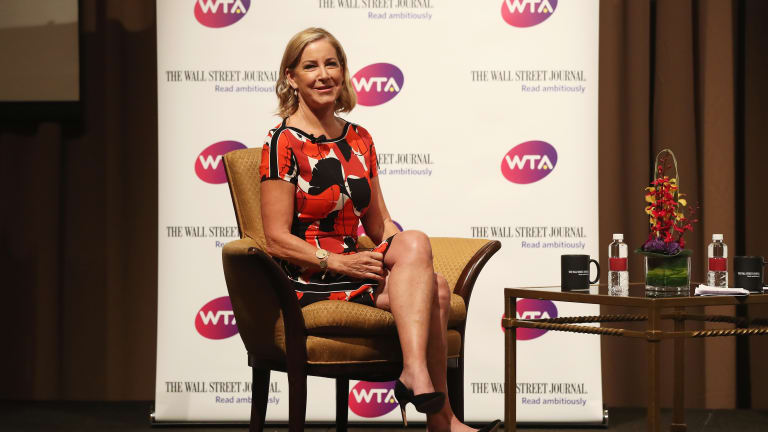Poise. Consistency. Focus. Those are three words associated with Chris Evert, who today turns 67. For more than 50 years, Evert has been a tennis fixture -- prodigy, champion, mentor, analyst.
Yet the stability implied Evert’s presence belies her stature as a tennis revolutionary, a player who turned the sport upside-down. Others did so loudly. Evert chose another path. As the Evert story reveals, that choice yieled both gain and pain.
Evert in large part created the way tennis is currently played—forceful groundstrokes, applying pressure with one deep drive after another. Prior to Evert’s arrival on the pro tour in 1971, just about every tennis player had a one-handed backhand and scarcely inflicted much damage from the baseline other than with depth and variety. The prevailing style was serve-and-volley.
Evert’s two-hander, along with those hit by Jimmy Connors and Bjorn Borg, represented a massive upgrade in power and proficiency that turned back the tables on net rushers. Rapidly, the template was set, millions more following in Evert’s wake to create a brand of increasingly forceful groundstrokes hit by such champions as Jennifer Capriati, Lindsay Davenport, Mary Pierce, Venus Williams, Serena Williams, and Naomi Osaka. For a contemporary male version of Evert, look no further than the disciplined footwork, balance, sustained depth and pinpoint precision generated by Novak Djokovic.
Off the court, Evert was also an innovator. Led by the “Original Nine,” the women’s pro tour had just begun when Evert played her first major, the 1971 US Open. One of those nine, Billie Jean King, instantly recognized that Evert had the potential to become a superstar—and in the process, greatly enrich the entire sport. But Evert’s father, Jimmy, supervised his daughter deliberately about how to maximize her commercial possibilities. Rather than swiftly sign one endorsement deal after another, Evert, later managed by sports marketing firm IMG, methodically built a select portfolio of corporate partnerships. The tennis deals were obvious: Wilson racquets and Converse shoes. The others revealed both class and breadth, including Rolex, Lipton, and Ellesse. A Wilson executive once told me that Evert’s credibility was so high that the company knew it could rely on her presence not just to boost tennis racquet sales, but the full range of sports equipment products.
